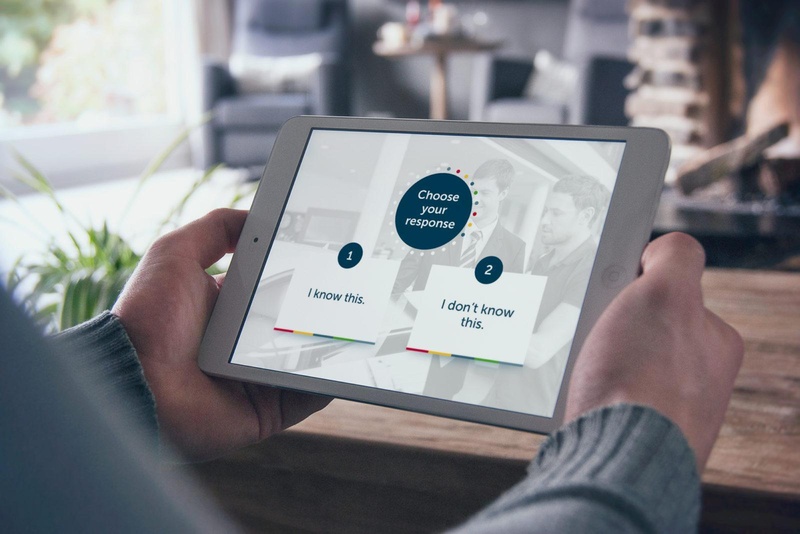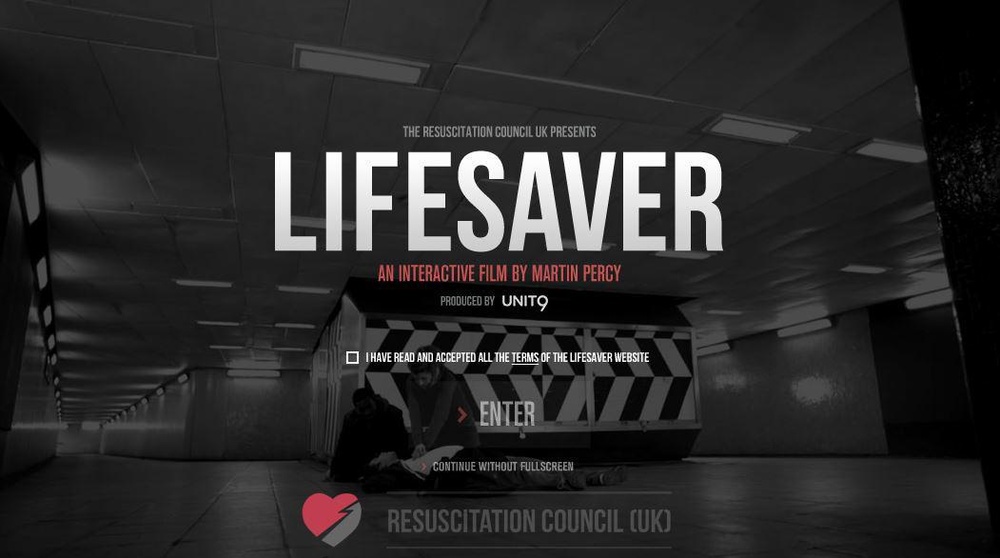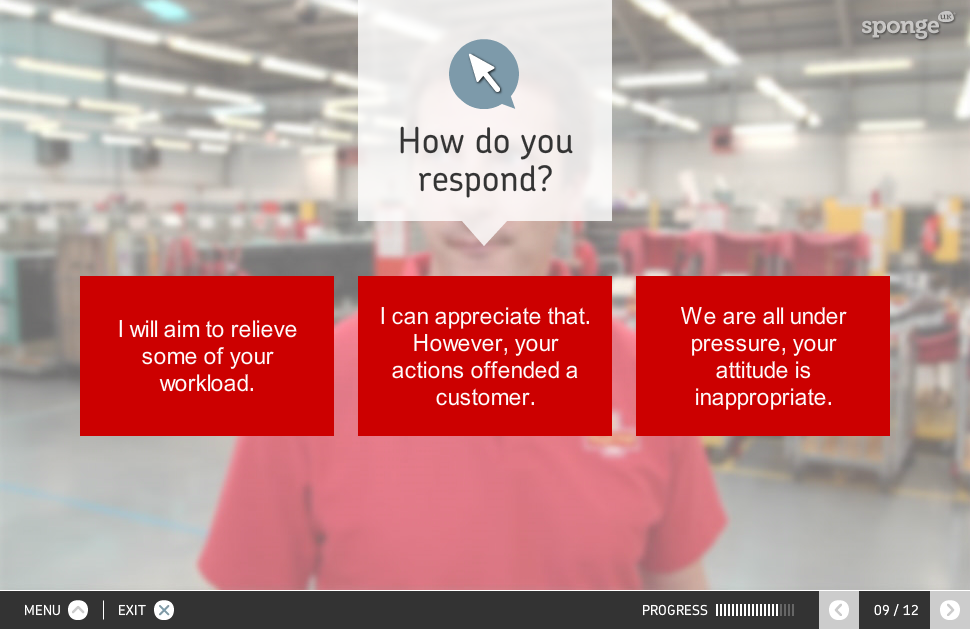How to supercharge your elearning scenario with interactive video

Scenarios are the building blocks of great learning. They are well established as an engaging and effective way to accelerate learners’ progress.
Interactive video is becoming easier to create, but ensuring it’s a good match for your learning objectives can still a challenge. This post will show you how to give your elearning scenarios a more engaging twist by using interactive video to enhance storytelling.
Benefits of stories in elearning
Creating a narrative isn't just a way to keep learners interested in completing a course, it’s also a chance to show them how a real life situation will play out before it happens. Effectively simulating a real life experience is a powerful tool for learning designers.
Putting an employee into a scene from their work environment, and allowing them to experience it, helps long term retention of skills they use in that situation.
Many existing elearning courses employ this technique to get the most out of traditional media like photos and regular video. But interactive video allows a higher level of realism and puts the learner in control of the story.
What does interactive video bring to scenario-based elearning?
Ruth Clark sets out the main elements that make up scenario-based learning in her popular book, Scenario-Based e-Learning.
They can be summarised as:
- Clear learning objectives
- Realism
- Inductive learning environment
- Guidance & additional resources
To be most effective, interactive video content should offer these elements of scenario-based elearning.
Clear learning objectives
Setting out clear learning objectives is critical for any elearning and is part of creating learner- focused training. They should match the overall business objectives and fit into the learning and development strategy.
Make sure you have a good idea of the outcomes you want from the training and can identify the ways they can be measured.
Realism
Realism goes hand in hand with interactive video. By using the exact environment and people who are involved in the real life situations you can effectively put the learner in their work environment.
Sometimes, it’s possible to use real employees to make the interactive video training even more authentic. On other occasions, actors can help make an extraordinary situation more believable.
By placing the learner at the centre of the story, you involve them in a way that isn't possible when they’re observing someone else. First person video is a popular way to achieve this and one of the early trendsetting examples of interactive video Choose a different ending uses this perspective.
If you are creating elearning for soft skills, or you have a wide range of employees who have different roles within your organisation, you can create different points of view for each scene.
Allowing a learner to see the same action from someone else’s perspective can promote empathy towards other staff, customers, or anyone else in the scene.
By offering multiple character points of view you’re also able to personalise the experience by allowing learners to choose the most relevant role to them.
Inductive learning environment
Inductive learning environments let learners figure out the correct action based on the consequences of their choices.
Giving a learner the opportunity to follow a path and find out on their own if it was correct through trial and error is one of the benefits of adding interactivity to a story.
Interactive video can present the learner with different feedback based on their actions, then offer a chance to try a different approach.
Guidance and additional resources
It’s possible to create a standalone interactive video course which contains the resources a learner needs inside the video itself.
However, it’s often practical to provide the video as part of a wider solution which includes material that supports the learning objectives in another form.
A successful interactive video course will result in accelerated learning, compressing the experiences of many months into one training session.
It’s also possible to use sections of the course on their own for learners who want to refresh on a particular subject, creating extra resources without the need for additional content.
Benefits of interaction
Allowing people to make their own choices through a scenario draws them in to the situation by giving them a stake in the outcome.
It’s important to keep the scenario relevant to the learners. In some cases offering an interactive element lets learners steer the situation in a way that keeps it relevant to their role.
Planning the different branches of the scenario helps make sure different outcomes are reached through the appropriate routes.
Branch mapping is a technique that allows instructional designers to plot the different routes through the scenario. A well designed interactive video will encourage and reward multiple views so each branch should stand alone as a scenario by itself.
Example – life-saver.org.uk

Lifesaver uses various on screen interactions on to keep learners engaged in the story and gamified elements like timed sections and scores for good choices. The interactive video is available on desktop and as an iPad app and rewards progress with unlockable scenarios.
Tracking
The example of Choose a different ending is hosted on YouTube but it can’t offer the tracking that a workplace elearning course requires.
An elearning solution using appropriate tools could track the actions of a user and report them back to a Learning Management System (LMS). This allows a manager to see how individual employees perform as well as get a picture of how effective the training is in different areas.
To make sure you can track learners’ routes through the video and offer appropriate support and feedback it’s possible to incorporate an interactive video into a SCORM tracking elearning authoring tool like Storyline 2.
By tracking the results of learners through the branching video, areas of concern can be highlighted as well as areas where additional training might not be necessary.
Once created the interactive video elearning can be taken by many staff, many times with little additional costs, representing a big cost saving over traditional training.
Example – Royal Mail

Using first-hand experience from front line employees, Royal Mail is using an interactive video module to help managers deal with difficult conversations.
Find out how interactive video training can make a real difference in your organisation by starting a conversation with us.